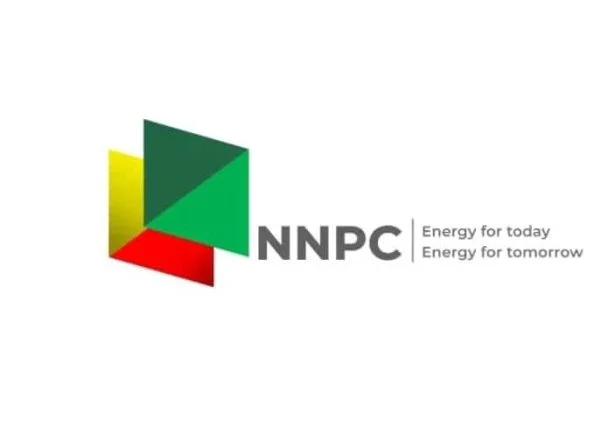Crude earnings plunge by 43%
 Nigeria’s gross profit from crude oil and gas sales plunged by N824.66bn in 2024 despite a rebound in oil production, figures from the latest Budget Implementation Report for the fourth quarter of 2024 released by the Budget Office of the Federation have shown.
Nigeria’s gross profit from crude oil and gas sales plunged by N824.66bn in 2024 despite a rebound in oil production, figures from the latest Budget Implementation Report for the fourth quarter of 2024 released by the Budget Office of the Federation have shown.
Data from the report revealed that gross profit from crude and gas sales fell to N1.08tn during the year, from N1.90tn in 2023, representing a 43.32 per cent decline.
The 2024 performance was also 26.3 per cent below the government’s budgeted target of N1.46tn, underscoring the persistence of weak fiscal inflows from the petroleum sector despite policy reforms aimed at boosting revenue.
The data indicated that the total oil and gas revenue before deductions stood at N15.07tn in 2024, against a budget of N19.99tn. This means that actual inflows fell short of the budget by N4.93tn or 24.65 per cent.
Compared with the previous year’s total of N8.36tn, however, oil and gas inflows almost doubled, showing an 80.33 per cent improvement. The PUNCH observed that the year-on-year increase was largely driven by stronger receipts from royalties, penalties, and exchange rate gains following the unification of the naira, rather than from higher crude export volumes.
The quarterly pattern showed that oil receipts rose from N3.35tn in the first quarter to N3.91tn in the fourth quarter, but remained consistently below the projected quarterly average of N4.99tn.
This underperformance reflects both lower-than-expected realised prices and production shortfalls relative to budget assumptions. Nigeria’s crude output fluctuated between 1.4 and 1.6 million barrels per day, below the 1.78 million barrels per day target used in the 2024 budget.
Despite being the country’s traditional fiscal anchor, gross profit from crude oil and gas sales accounted for only about eight per cent of total oil and gas revenue in 2024, highlighting the structural shift in government earnings toward taxes, royalties, and penalties.
The Petroleum Profit Tax and Company Income Tax on gas operations brought in N6.00tn, representing nearly 40 per cent of all oil inflows, while oil and gas royalties alone generated N6.99tn—an increase of 179.74 per cent compared with N2.50tn in 2023. Officials attributed this rise to improved compliance monitoring and the conversion of marginal fields and assets under the Petroleum Industry Act.
Other revenue streams also performed strongly. Gas-flaring penalties yielded N391.26bn, up 178 per cent from N140.54bn in 2023, even though the budget had made no provision for this category.
Incidental oil revenue from royalty recovery and marginal field settlements climbed to N347.75bn from N155.99bn a year earlier, a growth of 122.93 per cent, while miscellaneous income, mainly from pipeline fees, increased to N35.2bn from N16.38bn.
One of the most significant contributors to the apparent growth in oil revenue was the exchange-rate gain, which soared to N4.24tn in 2024 from N791.88bn in 2023—an increase of over 435 per cent. The surge followed the naira’s steep depreciation after exchange rate liberalisation, which inflated dollar-denominated oil earnings when converted into local currency.
After accounting for all deductions, net oil revenue for 2024 stood at N12.95tn, against a budget target of N16.98tn, a difference of N4.03tn or 23.74 per cent. When compared with the N4.82tn realised in 2023, the 2024 outcome represents a 168.83 per cent increase.
While the figures appear positive on paper, The PUNCH observed that much of the gain came from exchange-rate effects rather than improved operational performance or higher crude proceeds.
Nigeria’s crude-oil production inched up in 2024, with data from the Nigerian Upstream Petroleum Regulatory Commission showing that output rose to 442.21 million barrels, compared with 392.66 million barrels in 2023.
The increase of 49.55 million barrels, or 12.62 per cent, marked a modest recovery in upstream performance following three years of volatility and output disruptions. On a daily-average basis, Nigeria pumped about 1.43 million barrels per day in 2024, up from 1.27 million barrels per day the previous year.
The gradual improvement reflected reduced vandalism along major crude-evacuation corridors, improved coordination among joint-venture partners, and incremental barrels from marginal-field operators licensed under the Petroleum Industry Act.
Monthly data showed that production stabilised after the second quarter. Average output slipped briefly to 1.29 million bpd in April 2024—when several terminals underwent maintenance—but recovered to 1.49 million bpd in December, the highest level of the year. The year-end figure was 12 per cent higher than December 2023’s 1.33 million bpd, signalling a firmer footing heading into 2025.
Total liquids—comprising crude oil and condensates—amounted to 492.34 million barrels in 2024, compared with 451.09 million barrels in 2023, translating to a 9.14 per cent increase.
Crude oil made up roughly 89.8 per cent of total liquids, while condensates contributed the remaining 10.2 per cent. The condensate share slipped slightly from 2023, underscoring that the recovery was







